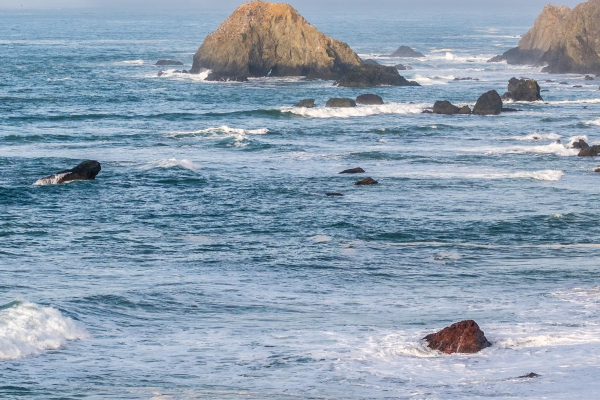
The Environmental Studies Program (ESP)
BOEM’s Environmental Studies Program develops, funds, and manages rigorous scientific research specifically to inform policy decisions on the development of energy and mineral resources on the Outer Continental Shelf (OCS). Research covers physical oceanography, atmospheric sciences, biology, protected species, social sciences and economics, submerged cultural resources and environmental fates and effects. Mandated by Section 20 of the Outer Continental Shelf Lands Act, the Environmental Studies Program is an indispensable requirement informing BOEM’s decisions on offshore oil and gas, offshore renewable energy, and the marine minerals program for coastal restoration. The ESP has provided over $1 billion for research to this end since its inception in 1973.
Selected Studies
Gaining knowledge of how Bureau activities may affect traditional ways, subsistence, and indigenous cultural resources is a key element to effective decision-making. Government-to-government consultations, community meetings, public hearings, and other special activities provide government staff and leadership the opportunity to learn from Tribes and incorporate their viewpoints in the decision-making process. For over 40 years the ESP has worked to engage with indigenous communities on cultural and subsistence studies.
Capacity Building and Collaboration with the Aquinnah and Mashpee Wampanoag Tribes
Monitoring of the Cross Island Subsistence Whale Hunt for Effects from Liberty DPP
Coastal and Submerged Historic Properties and Precontact Sites on the Alaska Outer Continental Shelf
Traditional Knowledge Regarding Bowhead Whales in the Chukchi Sea, 2007-2009
Monitoring Social and Cultural Effects, Phase I: Beaufort Region (TR-117)
Subsistence Use And Knowledge Of Salmon In Barrow And Nuiqsut, Alaska, 2009-2012
Subsistence Mapping Of Nuiqsut, Kaktovik, And Barrow, 2009-2013
COMIDA: Impact Monitoring For Offshore Subsistence Hunting, 2008-2012
Sociocultural Consequences of Alaska OCS Activities: Data Analysis And Integration, 1995-2001
Compendium of Alaskan OCS Cultural Resources Studies 1978-1986
West Coast Tribal Cultural Landscapes
O`ahu’s Traditional Cultural Landscapes (Upcoming)
Ancient Landforms off the Washington Coast
Maritime Heritage of the U.S. Pacific Islands (Upcoming)
Evaluating Hawaiian Fisheries and Potential Impacts of Offshore Wind Energy Development (Upcoming)
Characterizing Tribal Cultural Landscapes, 2015-2017
- A Guidance Document for Characterizing Tribal Cultural Landscapes, 2015
- Volume I: Project Framework, 2017
- Volume II: Tribal Case Studies, 2017
- NOAA Tribal Cultural Landscapes website
Inventory and Analysis of Coastal and Submerged Archaeological Site Occurrence on the Pacific Outer Continental Shelf, 2013
Archaeological and Biological Assessment of Submerged Landforms off the Pacific Coast, 2014-Present
Maritime Cultural Resources Site Assessment in the Main Hawaiian Islands, 2013-2017
- Technical Summary, 2017
- Volume I: The Unseen Landscape: Inventory and Assessment of Submerged Cultural Resources in Hawai`i, 2017
- Volume II: A ‘Ikena I Kai (Seaward Viewsheds): Inventory of Terrestrial Properties for Assessment of Marine Viewsheds on the Main Eight Hawaiian Islands, 2017
- Volume III: A Guidance Document for Characterizing Hawaiian Cultural Landscapes, 2017
Multi-Agency Rocky Intertidal Network (MARINe), 1997-Present
Cultural Heritage and Traditional Knowledge of Vulnerable Coastal Communities (Upcoming)
Cultural Resources Evaluation of the Northern Gulf of Mexico Continental Shelf
Volume I: Prehistoric Cultural Resource Potential 1977
Gulf Of Mexico OCS Cultural Resources Sensitivity Zone Mapping (1975-1977)
Environmental Justice Considerations in Lafourche Parish, Louisiana 2004
History of Offshore Oil Development In The Gulf Of Mexico, Phase II: Research And Synthesis 2008
Ocean Science Publications with Highlights on historic preservation, traditional knowledge and cultural-landscape

